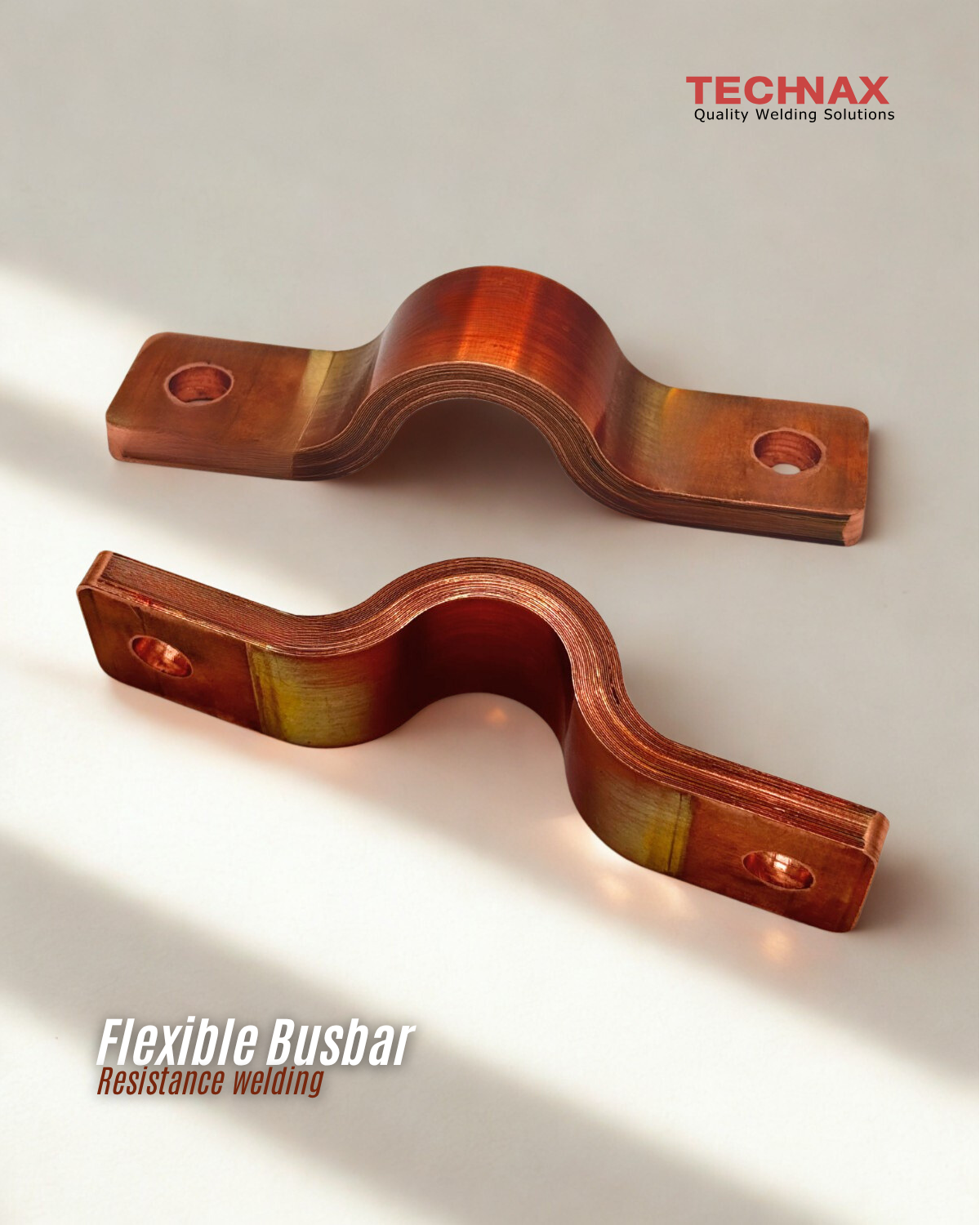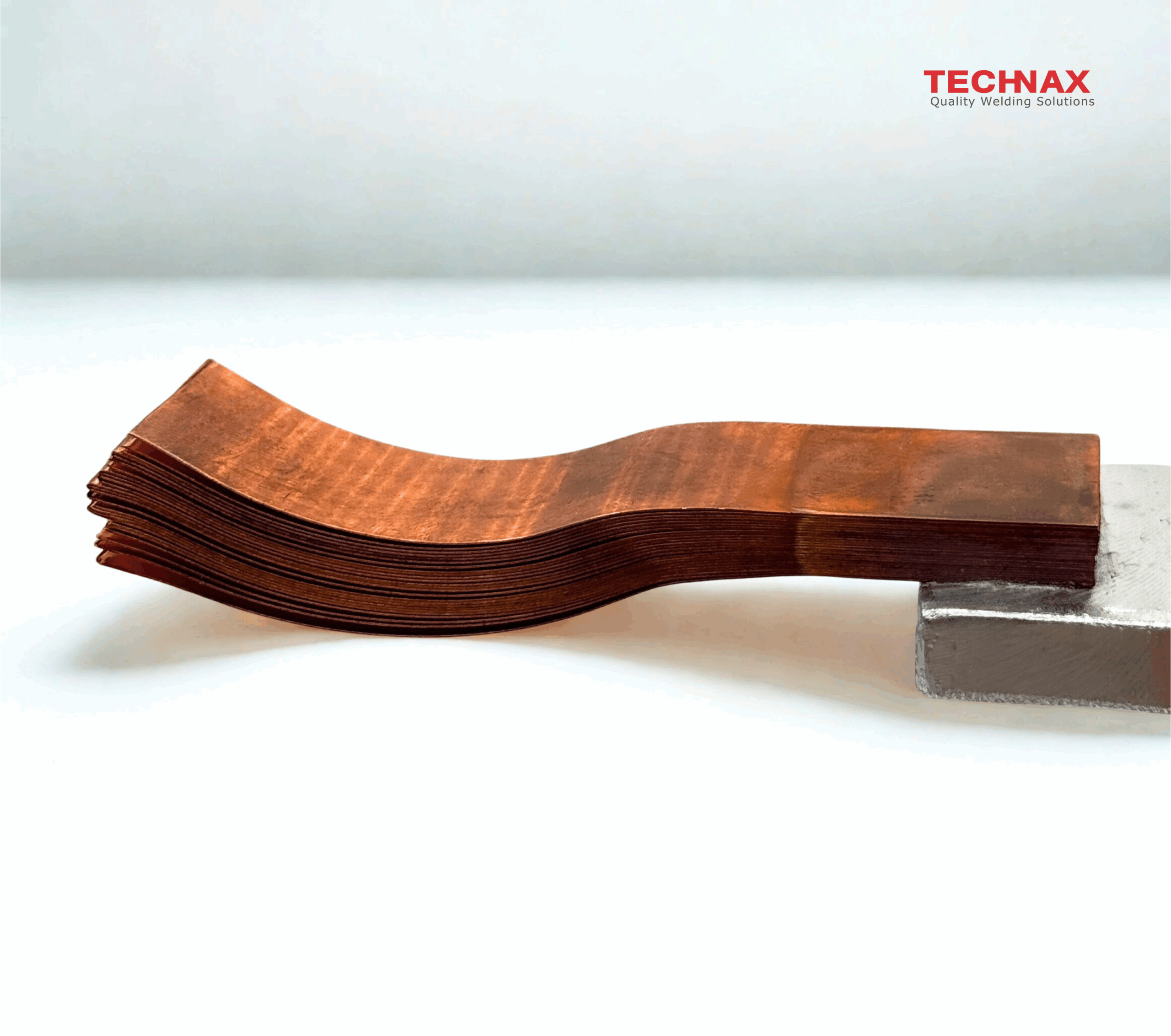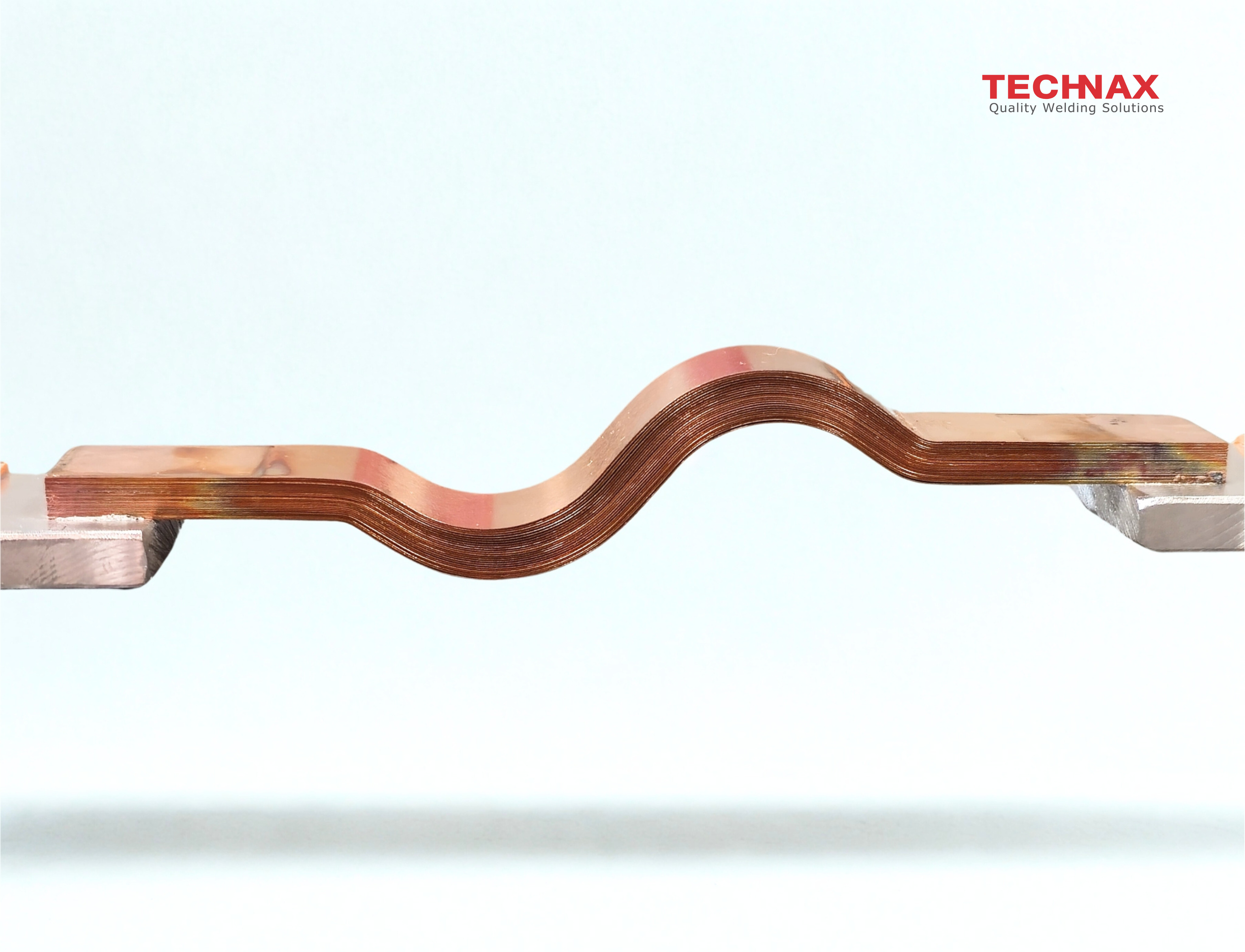Flexible busbars
Flexible busbars are mostly used in the manufacturing industries, like e.g. in the energy and more recently in automotive industry to transport current between components, where high flexibility is required. Industrials may also use aluminium flexible busbars because of the weight and costs reduction.
Flexible busbars are traditionally in copper and welded by diffusion welding, applying high current and pressure over a long time. They offer excellent mechanical and electrical properties.
They are produced by stacking several strips of metals on each others and are an alternative solution to copper braids.
FEATURES
- Mechanical Flexibility
• Adaptable to confined spaces: Flexbusbars can bend, twist, or conform to complex layouts — ideal for compact electrical cabinets.
• Fewer accessories required: Reduced need for connectors, elbows, or special supports, simplifying assembly.
2. Electrical Performance
• Low impedance: Offers better conductivity than equivalent multi-stranded cables, reducing energy losses.
• Improved heat dissipation: Layered or laminated designs allow for better ventilation and enhanced thermal management.
3. Easy Installation
• Time-saving: Faster to position and adjust than rigid bars, which often require cutting or machining.
• Direct connection: Can be screwed or crimped directly onto terminals or equipment — no need for intermediate lugs.

4. Compactness & Space Saving
• Helps reduce the footprint of electrical installations, especially in distribution boards or inverters.
5. Vibration Resistance
• Their flexibility allows better absorption of vibrations than rigid bars — ideal for industrial or mobile environments.
6. Versatility
• Suitable for switchboards, charging stations, battery systems, photovoltaic inverters, and more.
TECHNAX INNOVATIVE SOLUTIONS
TECHNAX welds flexbusbars by resistance welding, which is faster and much more industrial than diffusion welding.
We offer complete solutions in the fabrication of flexbusbars. Starting from a coil, the metal strip is unwound and cut to length to obtain strips.
In a next step, copper strips are stacked and welded on their extremities, by resistance. Finally, strips are calibrated, sometimes bent and/or punched.
TECHNAX recently developed expertise in the fabrication of aluminium flexbusbars, using the laser welding technology.
By using the TECHNAX concept, flexbusbars can be produced in a matter of seconds. Our solutions also offer the advantage of considerably reducing wear parts compared to traditional solutions.


